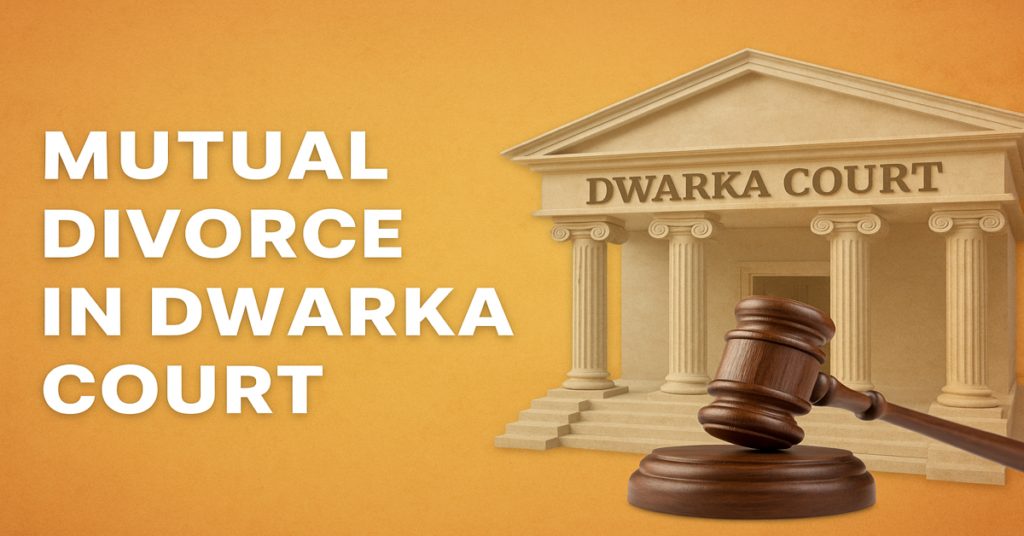In today’s society, marriages can sometimes reach a point where the best solution for both parties is to seek a mutual divorce. A mutual divorce, also known as an uncontested divorce, is a process where both spouses agree to end their marriage without any major conflicts or disputes. This article will guide you through the various aspects of a mutual divorce, including its definition, benefits, legal requirements, and the step-by-step process involved.
Table of Contents
1. What is a Mutual Divorce?
A mutual divorce is when both husband and wife agree to end their marriage without blaming each other. It is a collaborative approach to divorce, aimed at minimizing conflicts and reaching an agreement on various aspects such as division of assets, child custody, and financial support.
2. Benefits of Mutual Divorce
2.1. Amicable Resolution
One of the key advantages of a mutual divorce is that it allows couples to part ways amicably. By avoiding lengthy court battles and emotional turmoil, both parties can move forward with their lives in a more positive manner.
2.2. Cost-Effective
Mutual divorce can be a cost-effective option compared to a contested divorce. Since there are no prolonged legal battles, the overall expenses related to legal fees and court proceedings are significantly reduced. Click here to know the case fee we charge for completing mutual divorce in the cities of Delhi, Mumbai, Gurugram & Bengaluru.
2.3. Time-Efficient
In a mutual divorce, the process is completed in a very short period. The absence of lengthy court procedures and negotiations expedites the overall divorce proceedings.
2.4. Privacy and Confidentiality
As mutual divorces typically involve less conflict, the proceedings are often kept private and confidential. This allows couples to maintain their privacy and protect sensitive information from becoming public.
3. Legal Requirements for Mutual Divorce
To obtain a mutual divorce, certain legal requirements must be met. While the specific requirements may vary depending on the jurisdiction, some common prerequisites include:
- Both spouses must consent to the divorce.
- The marriage must have irretrievably broken down.
- The couple must fulfill the required separation period.
- Agreement on various issues such as division of property, child custody, and financial support must be reached.
4. Step-by-Step Process of Mutual Divorce
4.1. Open Communication
Effective communication between spouses is crucial during a mutual divorce. It is important to discuss the decision to divorce openly and honestly, addressing any concerns or expectations both parties may have.
4.2. Consultation with Professionals
Seeking professional guidance from lawyers, mediators, or counselors can help facilitate the mutual divorce process. These professionals can provide legal advice, assist in negotiations, and offer emotional support. Click here to consult with us.
4.3. Agreement on Key Issues
Both spouses must agree on key issues such as division of assets, child custody, visitation rights, and financial support. It is essential to approach these discussions with a cooperative mindset, aiming for fair and reasonable outcomes.
4.4. Drafting the Divorce Agreement
Once an agreement has been reached, it is important to document the terms in a legally binding divorce agreement. This document will outline the agreed-upon terms and conditions and serve as a reference throughout the divorce process.
4.5. Filing the Petition
The next step involves filing a joint petition for mutual divorce with the appropriate court. This petition will include the divorce agreement, supporting documents, and any other required forms.
4.6. Waiting Period and Finalization
After the petition is filed, there is usually a waiting period specified by the court. This waiting period allows time for reflection and ensures that both parties are committed to the decision. Once the waiting period elapses, the court reviews the petition and, if satisfied, grants the final divorce decree.
To check stepwise process as being followed in Indian Family Courts, click here.

5. Financial Considerations in Mutual Divorce
During a mutual divorce, financial matters need to be carefully addressed. It is important to consider aspects such as:
- Division of marital assets, including property, investments, and debts.
- Spousal support or alimony, if applicable.
- Child support and related expenses.
- Health insurance coverage for both spouses and children.
6. Division of Assets and Liabilities
When going through a mutual divorce, the division of assets and liabilities should be approached fairly. It is advisable to create an inventory of all shared assets and debts, valuing them accurately. Dividing these assets and liabilities equitably can help ensure a smooth transition for both parties.
7. Child Custody and Support in Mutual Divorce
Child custody and support arrangements are essential considerations in a mutual divorce, especially when children are involved. It is important to prioritize the best interests of the children and create a parenting plan that outlines custody arrangements, visitation schedules, and financial support obligations.

8. Mediation and Counseling in Mutual Divorce
Mediation and counseling can play a significant role in resolving conflicts and facilitating effective communication between divorcing couples. Seeking professional help in the form of mediation sessions or therapy can assist in reaching mutually acceptable agreements and promoting emotional well-being during the divorce process. You can check this article to know more.
9. Filing the Petition for Mutual Divorce
The process of filing a mutual divorce petition involves completing the necessary paperwork, which may vary depending on the jurisdiction. It typically includes the joint petition, affidavits, financial disclosures, and the divorce agreement. Consulting with an attorney can ensure that all required documents are properly prepared and submitted.
10. Waiting Period and Finalization
After filing the petition, there is usually a waiting period before the divorce is finalized. This waiting period varies by jurisdiction and is designed to allow couples to reconsider their decision. Once the waiting period ends, the court reviews the petition, verifies the agreement, and grants the final divorce decree. Click here to know the minimum period for divorce by mutual consent.
11. Mutual Divorce vs. Contested Divorce
A mutual divorce differs from a contested divorce in several ways. In a contested divorce, there is disagreement and conflict between the spouses regarding various issues, requiring court intervention to resolve disputes. In contrast, a mutual divorce is based on agreement and cooperation, allowing for a smoother and less adversarial process. You can check this article to know more.
12. Challenges and Considerations in Mutual Divorce
While a mutual divorce offers numerous advantages, certain challenges and considerations should be kept in mind. These include:
- Emotional stress and adjustment during the divorce process.
- Navigating complex legal procedures and paperwork.
- Addressing potential power imbalances between spouses.
- Ensuring the enforceability of the divorce agreement.
13. Seeking Legal Assistance
Although a mutual divorce is generally a more straightforward process, seeking legal assistance is advisable. An experienced divorce attorney can provide guidance, review the divorce agreement, and ensure that all legal requirements are met. Their expertise can help protect your rights and interests throughout the process.
14. Emotional Well-being during a Mutual Divorce
Divorce can be emotionally challenging for both spouses. It is crucial to prioritize self-care and seek support from friends, family, or professional counselors. Engaging in stress-reducing activities, practicing self-reflection, and maintaining open communication can contribute to a healthier emotional well-being during and after the divorce.
Conclusion
Mutual divorce provides a constructive and amicable way to end a marriage. By approaching the process with open communication, collaboration, and a focus on fairness, couples can minimize conflicts and achieve a mutually beneficial outcome. Seeking legal guidance, addressing financial considerations, and prioritizing emotional well-being are key aspects of navigating a successful mutual divorce.




